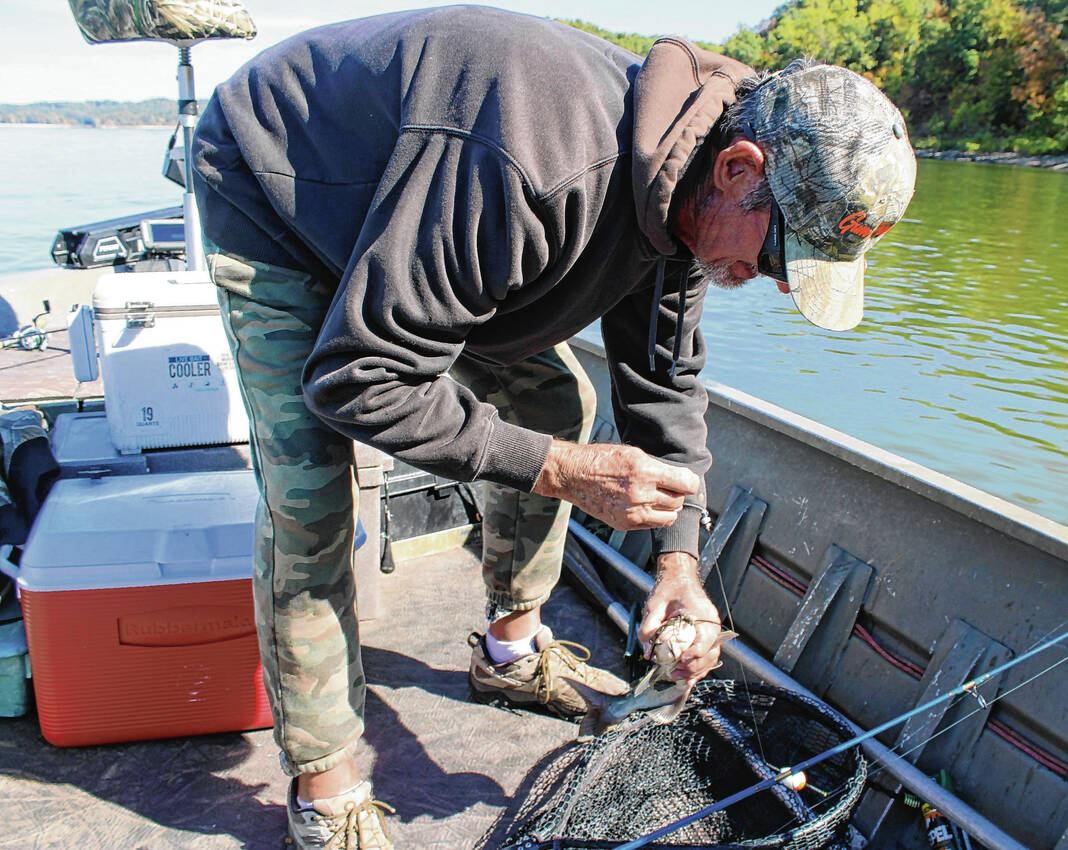
Fishing guide Tom Todd bends to carefully avoid being cut as he releases a channel catfish on Lake Monroe during a recent fishing trip.
Lew Freedman | The Tribune
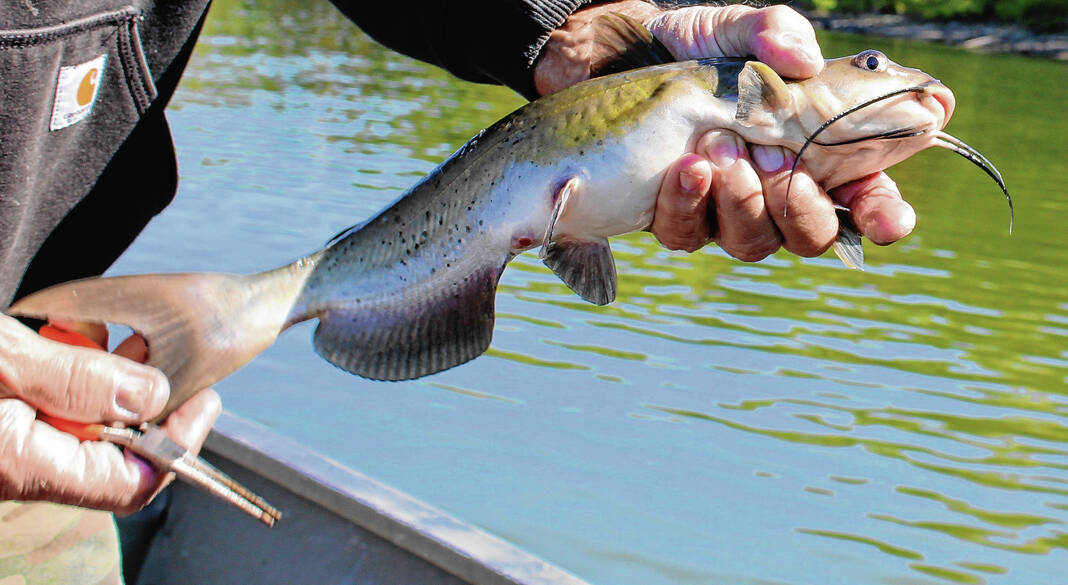
A closeup of a 14-inch channel catfish.
Lew Freedman | The Tribune
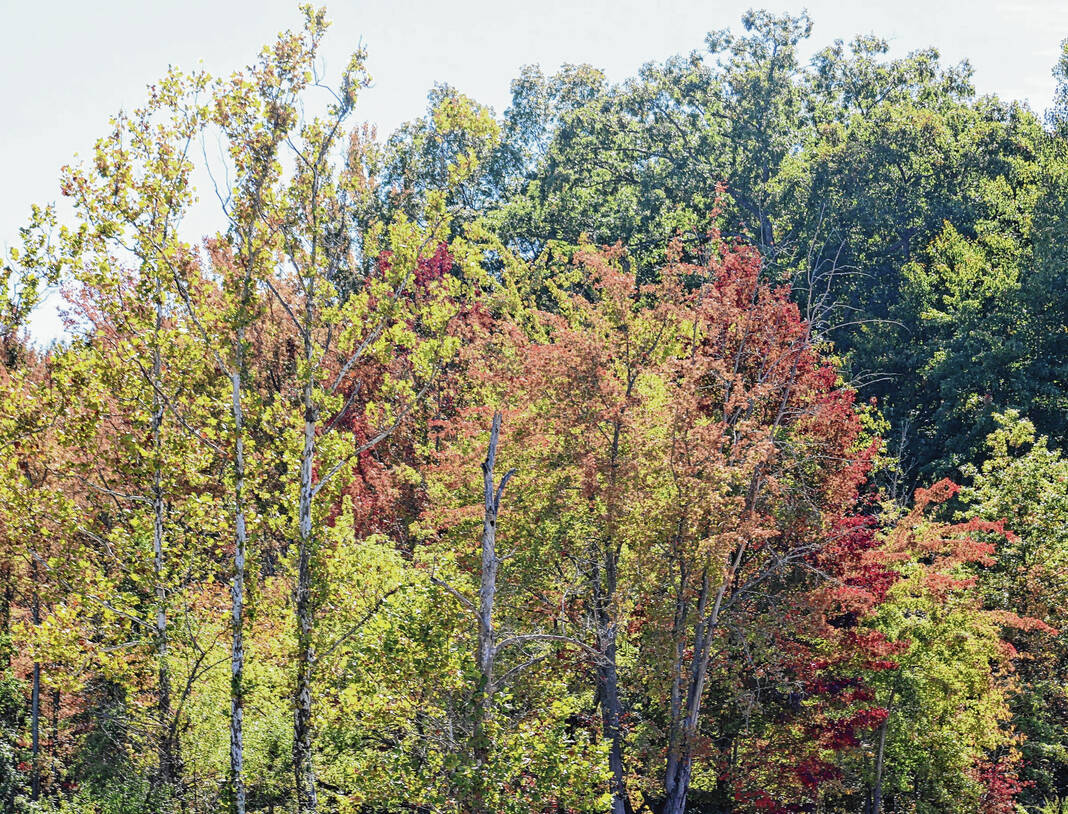
There was bright fall foliage along the shore at Lake Monroe in early October.
Lew Freedman | The Tribune
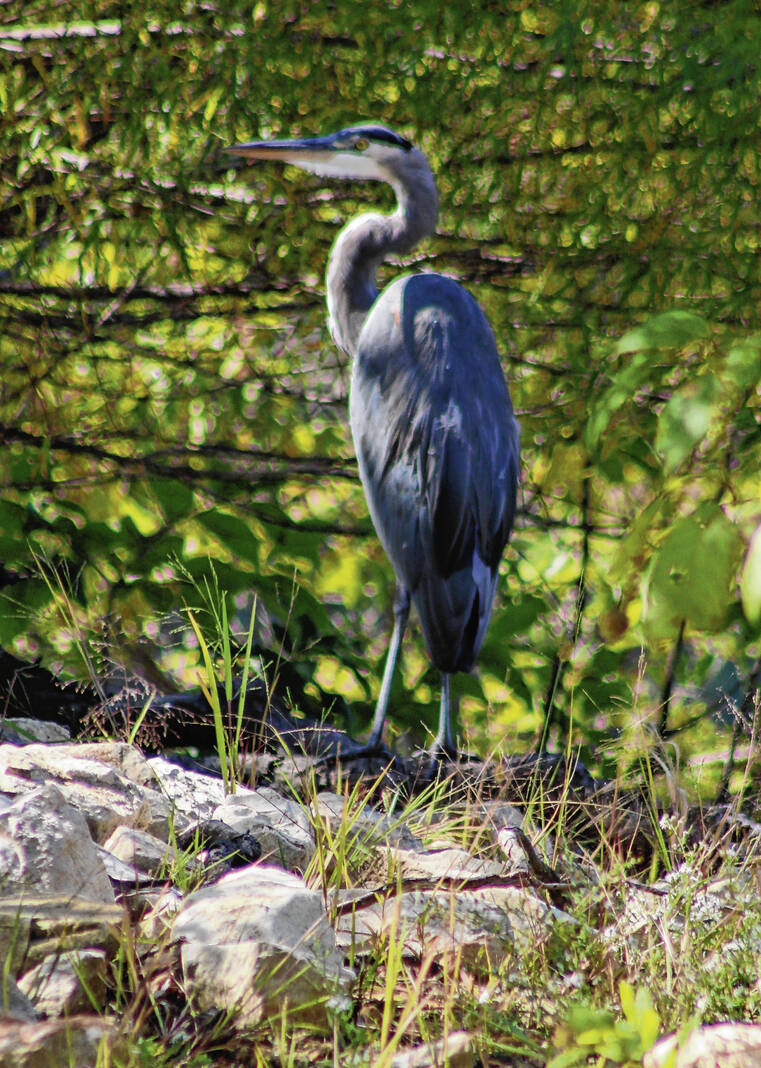
A great blue heron relaxed at the lake on a sunny day.
Lew Freedman | The Tribune
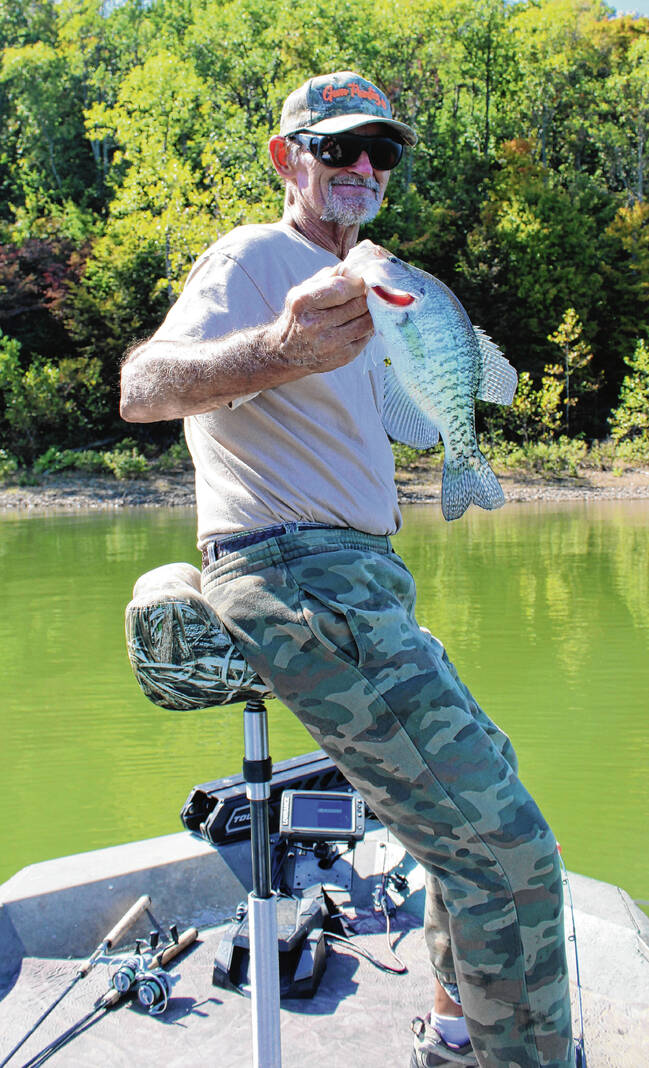
This white crappie was the first good-sized fish of the day at Lake Monroe.
Lew Freedman | The Tribune
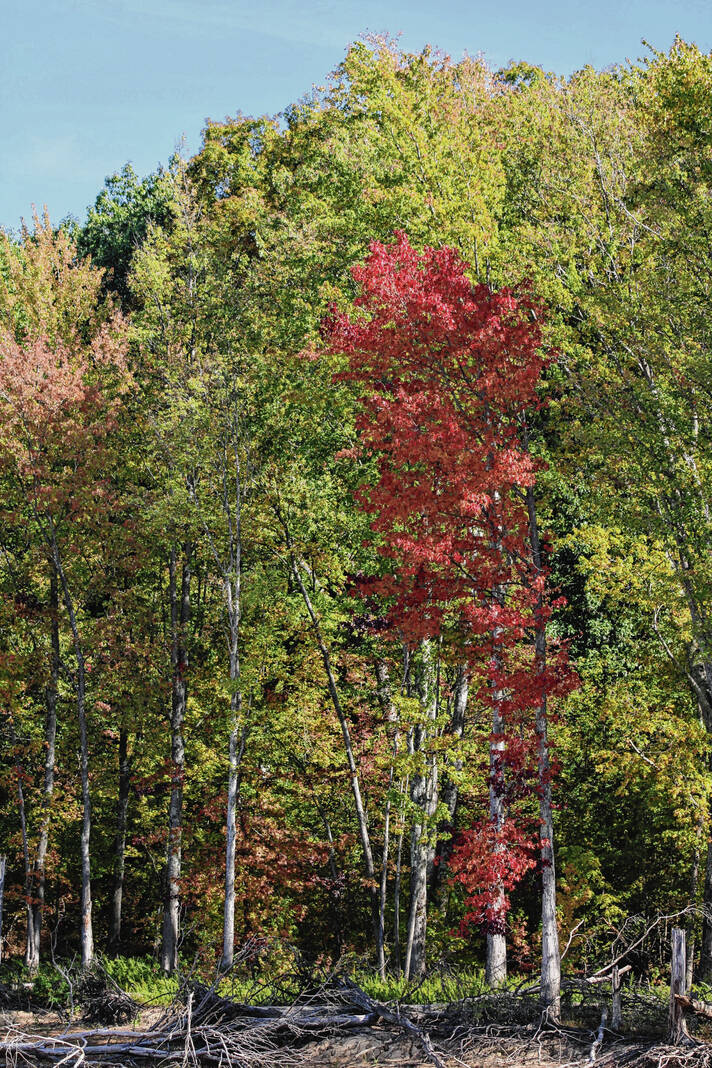
Lew Freedman | The Tribune
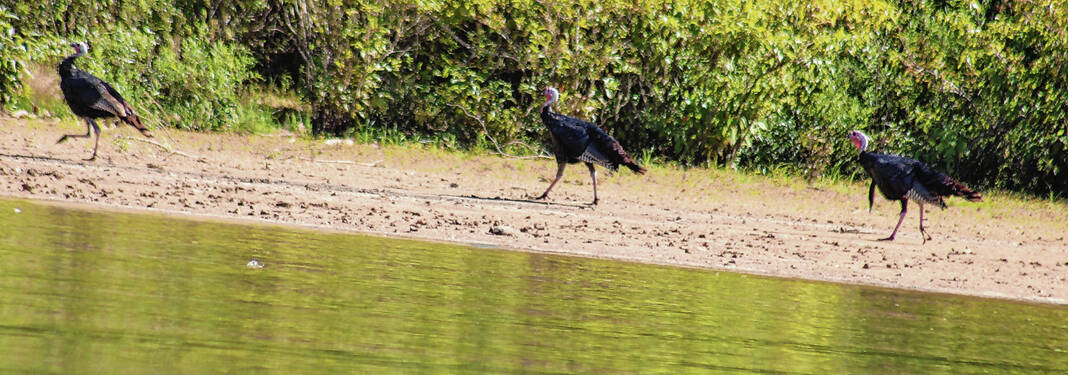
A handful of turkeys came to the lake to refresh with a drink of water but exited quickly when people approached.
A handful of turkeys came to the lake to refresh with a drink of water but exited quickly when people approached.
Lew Freedman | The Tribune
BLOOMINGTON — It seemed too grandiose to label a quest for catching five different species of fish on Lake Monroe in one day as a grand slam because the fish would not be of grand size.
There was no reward for it, no recognition for it, but bringing in five different kinds of fish on the 10,750-acre lake seemed a worthwhile goal. White crappie, black crappie, yellow bass, bluegill, hybrid stripers, largemouth bass, walleye and channel catfish are all inhabitants of Indiana’s largest lake.
How about a variety pack? Other than it sounding somewhat like something to purchase at Walmart, it seemed suitable.
Under the guidance of Tom Todd of Tom’s Guide Service, five of anything became the target, a willingness to collect anything that came our way with primarily fresh minnows for bait on 10-pound test line. Occasionally, there was alternating with gleaming treble hooks. It was a take-what-you-get approach, sort of like door-to-door trick or treating.
Not even Todd really knew what might happen. It was early October, early fall, with the water temperature in some places still pretending it was summer.
“The water is turning over,” he said. “The fish don’t know what to do.”
That meant swim low or come higher, closer to the surface. The air temperature wasn’t much guidance, either. It was 37 degrees driving to Monroe, 45 degrees by 9 a.m., with the last of overnight mists melting away, and it was on its way to 75 degrees under a stunning sun by mid-afternoon.
The mind was on fishing and fish, but the atmospheric conditions and the lake environment ended up offering more entertainment. What started as being all about fishing blossomed into Nature Day, as if it was its own holiday cobbled together for those just lucky enough to be outdoors in the neighborhood.
To some degree, the vast lake was almost a private pond, with no one else fishing, or even boating within several hundred yards. This is the way it gets on Monroe on weekdays once school starts. People mostly turn out on weekends.
“It is lovely and quiet through October,” said Indiana state Department of Natural Resources interpretive naturalist Jill Vance of Monroe’s ongoing charms.
The temperature for the fish was still running at 65 or 70 degrees, Vance said.
“It stays swimmable until early November,” she said.
For people, she meant, never mind fish.
First fish on
The swimming fish were out there by the thousands, the hundreds of thousands, who knew how many. It was just a matter of where.
As a Monroe regular, Todd had in mind some locations where fish had been attracted to baits and lures less than 24 hours earlier. His electronics on the 18-foot open boat would announce the schools of shad congregating which could help pinpoint groups of other species stalking them for a meal.
“Look at all of those fish,” Todd said as he motored slowly to a choice spot not far from shore after putting in at Cutright State Recreation Area.
Those moving colored spots on his screen were indeed fish, but they were not looking at us or our minnows yet.
“It was an afternoon bite yesterday,” Todd said.
On Monroe, if you’re talking 15 inches, you are talking photogenic fish. Others may be tiny, just a few inches long. From Todd’s experience, all brands, or species on this lake, would find minnows tasty.
“All the fish will like all the bait,” Todd said.
Todd had gone shopping and at a bait store he asked the seller for “some lucky minnows.” She said that’s all they carried.
Anxious to land fish, it took some motoring and waiting on dropped lines to realize how peaceful and idyllic the Monroe scene was. The air was swiftly graduating from crisp and along the shore trees were adapting to autumn, leaves turning bright red or orange, going yellow, yet still mixing with green. It was a crayon box come to life.
The first hits on the minnows were several-inch long white crappie, some pudgier than others, and then some smaller black crappie. One of the whites, about 13 inches, was eating size, but this was a pre-planned catch-and-release day.
“We won’t get skunked,” Todd said as we struck, bang, bang, one-two.
Todd marked spots with a yellow buoy, sometimes in five feet of water. Casting was short, aiming about a dozen feet out into the brownish water.
Once in a while what seemed like a big hit turned out to be a hefty log that pulled back harder than any fish. An angler never can tell what might find its way onto a hook, at Monroe or elsewhere.
“Tin cans, horse shoes, T-shirts,” Todd said in testimony given as evidence of the crime of littering. A friend seeking hybrids was once startled catching an eight-foot python with its head cut off. “It was dead.” And probably discarded that way.
Fishing in 13 feet of water, Todd’s strategy called for dropping the bait halfway to the bottom so the minnow wiggled above fish. He hoped the placement would drive them crazy with curiosity.
“They can’t stand it,” he said of the bait dangling right over their heads.
Turns out that on this day they could. A half hour of that was deemed enough as the bait was reeled in and the motor energized.
“Let’s go find some fish,” Todd said.
Wildlife near the water
Birds of various sorts appeared overhead and a pair of cormorants sped along the lake’s surface. Eagles frequent Monroe and the revered American bird can be seen soaring around at any given time, though not this day.
A great, blue heron, however, its long, pointy beak standing out as it perched on the tip of a sandbar, watched warily, but did not flee, as the boat approached.
A good tug at the end of the line had me reeling as the rod bent. What was it? How big? The minnow lured a 14-inch channel catfish, its whiskers flaring. It was not in a good mood after being hooked.
Todd announced the dangers of catfish being freed, one that might cut a finger during the process of being released, but no blood was drawn.
There were lulls where the fish showed lack of interest in the minnows and golden hooks, but then they became more active biting. White crappie were the most cooperative, up to 15 inches, and small yellow bass inserted themselves into the picture. Then nada.
“It looks as if they turned off,” Todd said. “I can’t believe it.”
But other nature activity turned on. The trees in select areas became more colorful. Then a handful of turkeys paraded down to the water for a cold drink. They drank and scampered, skittish at the rumble of the boat’s motor.
Yep, turkeys, Vance said. Plus, deer. And definitely eagles.
“That is the wildlife we’re best known for,” she said.
Waterfowl hunting starts soon enough. Those turkeys have reason to worry since there is a muzzleloader and archery hunting fall season. Campgrounds remain open. Hiking is good, fall foliage brilliant. Although technically beaches are closed, people can still swim, Vance said, and fishing continues. Monroe does not freeze.
“Usually, the lake is wide open,” she said of winter.
For more than seven hours there were few other anglers or boaters. We totaled about 35 fish caught, but just four species, white crappie, black crappie, channel catfish and yellow bass.
As the truck backed to water’s edge, however, and the boat eased onto the trailer, a silvery sight caught the eye. Lying on the ground, barely a foot behind the truck, was a shad.
“We scared him up,” Todd said.
Fifth species!
